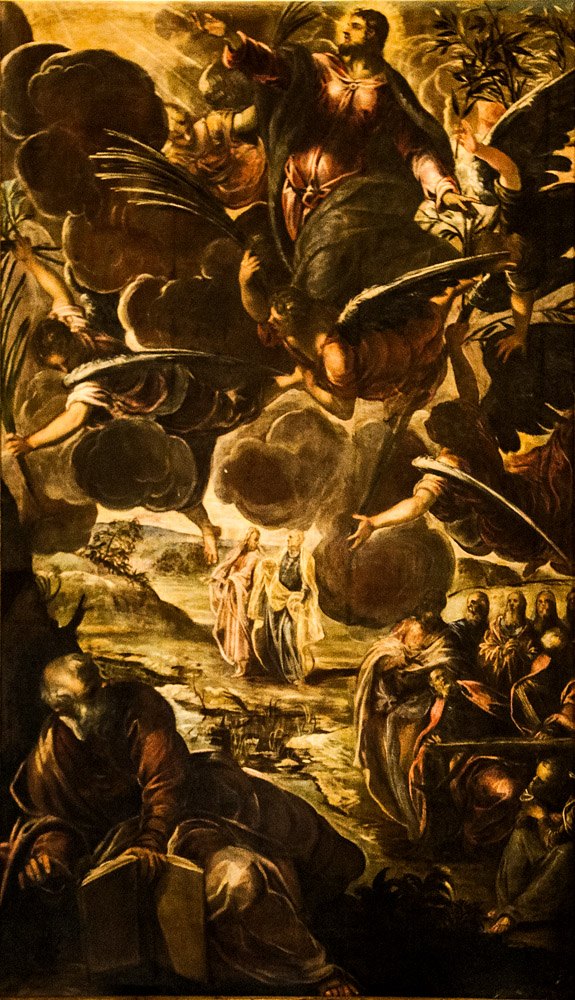
Jacopo Tintoretto
The Ascension
Circa 1578-81
Oil on canvas
Scuola Grande di San Rocco, Venice, Italy
This is a late example of the "Climbing to Heaven" type of Ascension image and an early example of the use of a surround of angels and light to express Christ's glorification.
In some ways the artist is taking the scriptural source more literally than the tradition did. The "cloud" that "received him out of their sight" (Acts 1:9) is usually ignored in Ascension images, which have the Apostles continuing to see Jesus as he rises up. Here the cloud really does obscure their view. Also, the "two men" who address the Apostles (Acts 1:10) are actually men, not angels as in the commentaries and almost all other Ascension images. The Web Gallery of Art identifies the men as Moses and Elijah, who conversed with Jesus in the Transfiguration. The Glossa Ordinaria (VI, 975) says the angels can signify either Peter and Paul or Elijah and Enoch.
The angels below the clouds are bringing the Apostles branches of palm and olive. Palm branches are common in images of martyrs, as eleven of the Apostles were thought to have been, but why add olive branches? The answer may lie in Rabanus Maurus's comment on Acts 1:8, "you shall be witnesses unto me in Jerusalem, and in all Judea, and Samaria, and even to the uttermost part of the earth." According to Rabanus, "In Jerusalem [means] in the vision of peace, in witnessing to the true faith, in keeping God's commandments, and in those things that will make them aliens in the earth" (Glossa, ibid.). The olive branches thus correspond to the "vision of peace" (which is the literal meaning of the name "Jerusalem") while the palm branches symbolize the martyrdoms that will "alienate" the Apostles from this sublunary world.
View this image in full resolution.
Read more about images of The Ascension.
Photographed at the site by Richard Stracke, shared under Attribution-NonCommercial-ShareAlike license.